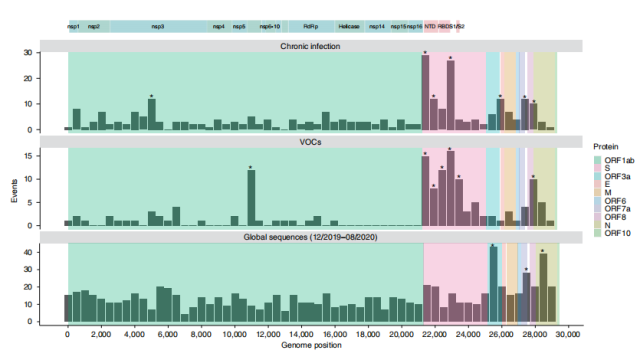Why “COVID-19 Negative” may not necessarily indicate that the virus has been cleared?
- Normal Liver Cells Found to Promote Cancer Metastasis to the Liver
- Nearly 80% Complete Remission: Breakthrough in ADC Anti-Tumor Treatment
- Vaccination Against Common Diseases May Prevent Dementia!
- New Alzheimer’s Disease (AD) Diagnosis and Staging Criteria
- Breakthrough in Alzheimer’s Disease: New Nasal Spray Halts Cognitive Decline by Targeting Toxic Protein
- Can the Tap Water at the Paris Olympics be Drunk Directly?
Why “COVID-19 Negative” may not necessarily indicate that the virus has been cleared?
- Should China be held legally responsible for the US’s $18 trillion COVID losses?
- CT Radiation Exposure Linked to Blood Cancer in Children and Adolescents
- FDA has mandated a top-level black box warning for all marketed CAR-T therapies
- Can people with high blood pressure eat peanuts?
- What is the difference between dopamine and dobutamine?
- How long can the patient live after heart stent surgery?
Why “COVID-19 Negative” may not necessarily indicate that the virus has been cleared?
Some studies have shown that BA.5, as the most infectious strain at present, has become the main epidemic strain in many countries since June.
ince the outbreak of the COVID-19 epidemic in December 2019, SARS-CoV-2 has undergone numerous updates, and the COVID-19 outbreak is usually associated with the emergence of new mutated viruses.
On July 8, 2022, Nature Medicine published an article entitled “Evolutionary insight into the emergence of SARS-CoV-2 variants of concern”, which carried out an evolutionary analysis of the SARS-CoV-2 virus, and the results showed that:
- During chronic infection, viruses evolve mutations similar to variants of concern (VOCs), many of which are associated with antibody evasion.
- The viral load of many SARS-CoV-2 patients typically becomes positive again a few days after “clearing” the virus, and the researchers found that this viral rebound is highly correlated with the accumulation of mutations associated with antibody escape
- A negative PCR result may not indicate that the virus has been cleared, and a rebound of the virus may indicate the emergence of a more “fit” virus, requiring continuous patient monitoring
1. Worrying variants emerge
In the past two years, there have been waves of SARS-CoV-2 infections worldwide, with outbreaks often associated with the emergence of “variants of concern (VOCs),” or new virus variants. . These VOCs are often highly mutated forms of viruses, and it is unclear how they arise in humans.
One hypothesis is that the evolution of VOCs is due to selective pressure during chronic viral infection. In fact, most patients with chronic SARS-CoV-2 infection have a suppressed immune system so that the virus can persist in the body for months.
However, the evolutionary pattern of SARS-CoV-2 in chronic infection is dynamic and varies between patients. Furthermore, the selection pressures and evolutionary processes at work during chronic infection remain unknown.
This study aims to elucidate the evolutionary pattern of SARS-CoV-2 found in a large number of chronically infected patients, identify the relevance of adaptive evolution, and hopefully better understand if and how VOCs emerge in the future.
2. SARS-CoV-2 mutation ≈ worrying mutation
The researchers established a cohort of 27 patients with chronic SARS-CoV-2 infection, examined each patient’s accumulation of viral mutations, and summarized their medical background with a focus on immunosuppression and COVID-19 treatment.

The findings suggest that the mutational profile of SARS-CoV-2 in chronically infected patients is highly similar to the emergence of “worrisome variant VOCs,” many of which are common to antibody avoidance-related mutations.
A doctor involved in the study noted that many SARS-CoV-2 patients typically have viral loads that are positive again a few days after “clearing” the virus, and the researchers found that this viral rebound is highly correlated with the accumulation of mutations associated with antibody escape
But treatment with antiviral antibodies was not associated with the aforementioned mutations. In addition, the researchers found that the viral populations in the collected viral samples of the upper and lower respiratory tract and plasma were highly polymorphic.
Taking these findings together, the researchers suggest that SARS-CoV-2 antibody evasion options may occur in the lungs, leading to the migration of new adaptive variants and viral rebound in the upper respiratory tract .
In addition, the researchers noted that key mutations associated with the high transmissibility of SARS-CoV-2 were not observed in chronic infections.
This observation suggests that higher transmission rates are not selected for in chronic infections, so the emergence of new VOCs in chronic infections may be rare .
This study identifies links and differences between SARS-CoV-2 evolution and VOCs in chronic infection, underscoring the importance of continuous monitoring of immunosuppressed patients for chronic SARS-CoV-2 infection.
In fact, a negative PCR result may not indicate clearance of the virus, and viral rebound may indicate the emergence of a more “fit” virus requiring continuous patient monitoring .
Furthermore, genomic analysis of chronically infected patients is a key avenue to understand how VOCs arise. Since immunosuppressed patients are at high risk for complications from COVID-19 and may serve as a backdrop for viral growth and evolution, these individuals should be protected from SARS-CoV-2 infection.
The article notes that the study also has some limitations, including a relatively small sample size and possible biases for age, gender, and medical background. Furthermore, all sequencing data analyzed in this study were obtained before most VOCs appeared.
Why “COVID-19 Negative” may not necessarily indicate that the virus has been cleared?
(source:internet, reference only)
Disclaimer of medicaltrend.org
Important Note: The information provided is for informational purposes only and should not be considered as medical advice.



